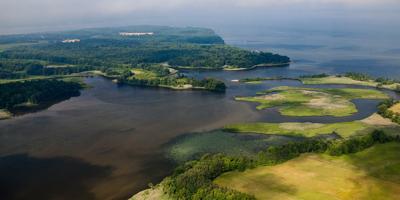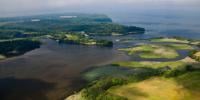ANNAPOLIS, Md. - More than 300 miles of stream habitat have been reopened to migratory fish across the Chesapeake Bay watershed between 2022 and 2023, marking a big increase from the previous two-year period and exceeding restoration goals.
Chesapeake Bay Program partners reported that 303 stream miles were made accessible to migrating fish such as alewife, herring, shad, brook trout and American eel.
The move surpasses the target of restoring 132 miles every two years. Only 33 miles were opened in the previous reporting period of 2020 to 2021.
"Through the collaborative work of our members and their strong partnerships with government and non-government organizations, we continue to reconnect and restore stream and river habitat across the watershed," said Ray Li, fishery biologist with the U.S. Fish and Wildlife Service and chair of the program's Fish Passage Workgroup.
Fish passage projects often involve removing dams, replacing culverts or installing infrastructure like fish ladders to help species return to their historical spawning grounds. Progress is tracked using data from The Nature Conservancy’s Chesapeake Bay Fish Passage Prioritization Tool, which measures stream miles opened and fish species presence at restored sites.
In total, 13 dams were removed during the 2022 to 2023 period. The most significant was the Oakland Dam removal along the Susquehanna River, which alone reopened over 200 miles. Other major projects included the Wilson Creek Dam in Virginia, restoring 19.3 miles, and the Hollister Dam in Pennsylvania, which opened 26.4 miles.
The program originally aimed to open 1,000 miles of stream habitat by 2025, a goal met nine years early in 2016. A revised outcome in 2020 established a pace of 132 miles every two years.
Since 1989, Chesapeake Bay Program partners have reopened 35,258 miles of stream habitat to migratory fish—11,440 miles through dam removals and 23,818 miles via other fish passage efforts.







